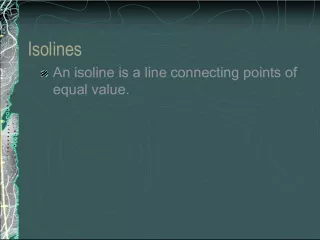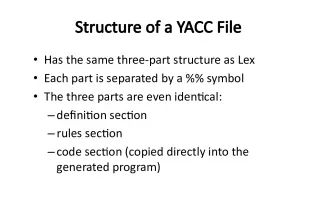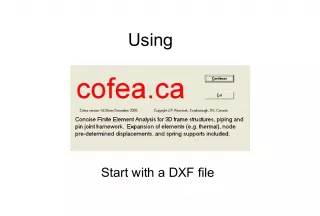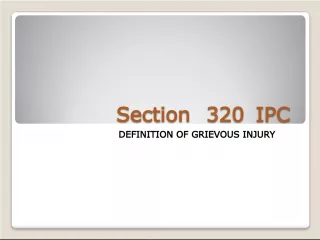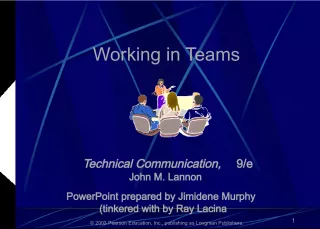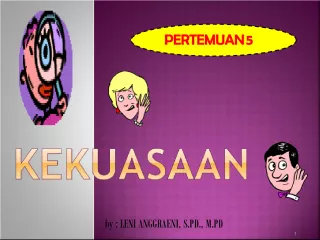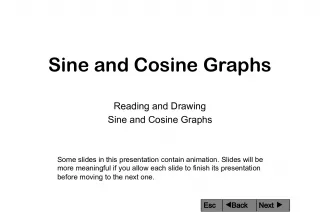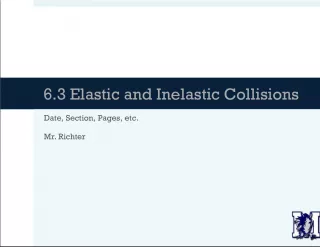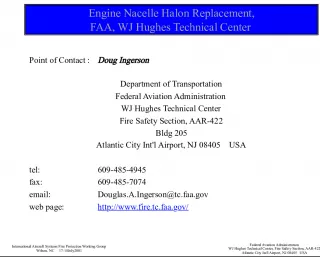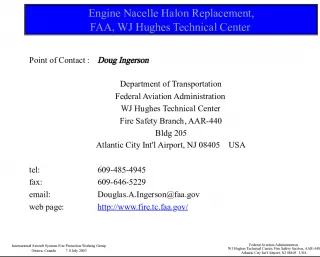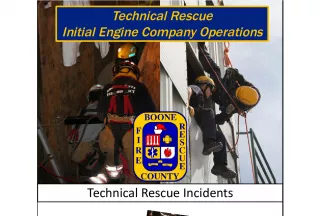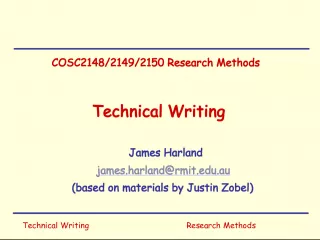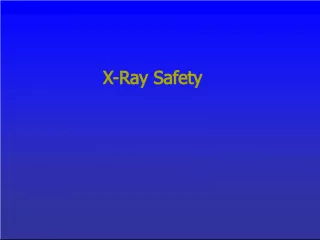Understanding Section Views in Technical Drawing


This chapter discusses the importance of section views in technical drawing and outlines the techniques for correctly identifying and representing various materials and geometries. Readers will learn how to apply section lining practices and identify various types of sections for clear and interpretable drawings.
- Uploaded on | 0 Views
-
 reinabruen
reinabruen
About Understanding Section Views in Technical Drawing
PowerPoint presentation about 'Understanding Section Views in Technical Drawing'. This presentation describes the topic on This chapter discusses the importance of section views in technical drawing and outlines the techniques for correctly identifying and representing various materials and geometries. Readers will learn how to apply section lining practices and identify various types of sections for clear and interpretable drawings.. The key topics included in this slideshow are section views, section lining, technical drawing, engineering graphics, cutting plane lines,. Download this presentation absolutely free.
Presentation Transcript
1. C H A P T E R S E V E N SECTION VIEWS SECTION VIEWS
2. 2 Technical Drawing with Engineering Graphics, 14/e Giesecke, Hill, Spencer, Dygdon, Novak, Lockhart, Goodman 2012, 2009, 2003, Pearson Higher Education, Upper Saddle River, NJ 07458. All Rights Reserved. OBJECTIVES OBJECTIVES 1. Understand sections and cutting-plane lines. 2. Apply correct section-lining practices. 3. Recognize and draw section lining for 10 different materials. 4. Draw a section view given a two-view drawing. 5. Demonstrate correct hidden-line practices for section views. 6. Identify seven types of sections. 7. Apply section techniques to create clear, interpretable drawings. 8. Demonstrate the proper techniques for sectioning ribs, webs, and spokes. 9. Use hatching when using conventional breaks to show elongated objects. 10. Interpret drawings that include section views.
3. 3 Technical Drawing with Engineering Graphics, 14/e Giesecke, Hill, Spencer, Dygdon, Novak, Lockhart, Goodman 2012, 2009, 2003, Pearson Higher Education, Upper Saddle River, NJ 07458. All Rights Reserved. UNDERSTANDING SECTIONS UNDERSTANDING SECTIONS Section views are used for three main purposes: To document the design and manufacture of single parts that are manufactured as one piece. To document how multiple parts are to be assembled or built. To aid in visualizing the internal workings of a design. When the part is cut fully in half, the resulting view is called a full section.
4. 4 Technical Drawing with Engineering Graphics, 14/e Giesecke, Hill, Spencer, Dygdon, Novak, Lockhart, Goodman 2012, 2009, 2003, Pearson Higher Education, Upper Saddle River, NJ 07458. All Rights Reserved. The Cutting Plane The Cutting Plane The cutting plane appears edgewise as a thick dashed line called the cutting-plane line. The arrows at the ends of the cutting-plane line indicate the direction of sight for the sectional view. The Cutting Plane
5. 5 Technical Drawing with Engineering Graphics, 14/e Giesecke, Hill, Spencer, Dygdon, Novak, Lockhart, Goodman 2012, 2009, 2003, Pearson Higher Education, Upper Saddle River, NJ 07458. All Rights Reserved. Visible Edges on Cutting Planes Visible Edges on Cutting Planes Newly visible edges cut by cutting plane are crosshatched with section lining.
6. 6 Technical Drawing with Engineering Graphics, 14/e Giesecke, Hill, Spencer, Dygdon, Novak, Lockhart, Goodman 2012, 2009, 2003, Pearson Higher Education, Upper Saddle River, NJ 07458. All Rights Reserved. LABELING CUTTING PLANES Note that each section (A-A and B-B) is completely independent.
7. 7 Technical Drawing with Engineering Graphics, 14/e Giesecke, Hill, Spencer, Dygdon, Novak, Lockhart, Goodman 2012, 2009, 2003, Pearson Higher Education, Upper Saddle River, NJ 07458. All Rights Reserved. RULES FOR LINES IN SECTION VIEWS RULES FOR LINES IN SECTION VIEWS Show edges and contours that are now visible behind the cutting plane. Omit hidden lines in section views. A sectioned area is always completely bounded by a visible outlinenever by a hidden line. A visible line can never cross a sectioned area in a view of a single part.
8. 8 Technical Drawing with Engineering Graphics, 14/e Giesecke, Hill, Spencer, Dygdon, Novak, Lockhart, Goodman 2012, 2009, 2003, Pearson Higher Education, Upper Saddle River, NJ 07458. All Rights Reserved. CUTTING-PLANE LINE STYLE CUTTING-PLANE LINE STYLE It is made up of equal dashes, each about 6 mm (1/4) long ending in arrowheads. This form works especially well for drawings. The alternative style, uses alternating long dashes and pairs of short dashes and ends with arrowheads. This style has been in general use for a long time, so you may still see it on drawings. Both lines are drawn the same thickness as visible lines. The arrowheads at the ends of the cutting plane line indicate the direction in which the cutaway object is viewed. Alternative Methods for Showing a Cutting Plane A and B .
9. 9 Technical Drawing with Engineering Graphics, 14/e Giesecke, Hill, Spencer, Dygdon, Novak, Lockhart, Goodman 2012, 2009, 2003, Pearson Higher Education, Upper Saddle River, NJ 07458. All Rights Reserved. Visualizing Cutting-Plane Direction Visualizing Cutting-Plane Direction Correct and Incorrect Cutting-Plane Line Placement
10. 10 Technical Drawing with Engineering Graphics, 14/e Giesecke, Hill, Spencer, Dygdon, Novak, Lockhart, Goodman 2012, 2009, 2003, Pearson Higher Education, Upper Saddle River, NJ 07458. All Rights Reserved. SECTION-LINING TECHNIQUE SECTION-LINING TECHNIQUE Uniformly spaced by an interval of about 2.5 mm Not too close together Uniformly thin, not varying in thickness Distinctly thinner than visible lines Neither running beyond nor stopping short of visible outlines
11. 11 Technical Drawing with Engineering Graphics, 14/e Giesecke, Hill, Spencer, Dygdon, Novak, Lockhart, Goodman 2012, 2009, 2003, Pearson Higher Education, Upper Saddle River, NJ 07458. All Rights Reserved. SECTION-LINING TECHNIQUE continued. SECTION-LINING TECHNIQUE continued.
12. 12 Technical Drawing with Engineering Graphics, 14/e Giesecke, Hill, Spencer, Dygdon, Novak, Lockhart, Goodman 2012, 2009, 2003, Pearson Higher Education, Upper Saddle River, NJ 07458. All Rights Reserved. Section-Lining Symbols Section-Lining Symbols Section-lining symbols may be used to indicate specific materials. These symbols represent general material types only, such as cast iron, brass, and steel. Symbols for Section Lining
13. 13 Technical Drawing with Engineering Graphics, 14/e Giesecke, Hill, Spencer, Dygdon, Novak, Lockhart, Goodman 2012, 2009, 2003, Pearson Higher Education, Upper Saddle River, NJ 07458. All Rights Reserved. Section-Lining in CAD Section-Lining in CAD CAD programs usually include libraries that allow you to select from a variety of section-lining patterns, making it easy to use different patterns, angles, and scales for the spacing of the pattern.
14. 14 Technical Drawing with Engineering Graphics, 14/e Giesecke, Hill, Spencer, Dygdon, Novak, Lockhart, Goodman 2012, 2009, 2003, Pearson Higher Education, Upper Saddle River, NJ 07458. All Rights Reserved. HALF SECTIONS HALF SECTIONS Symmetrical objects can be shown effectively using a special type of section view called a half section . A half section exposes the interior of half of the object and the exterior of the other half. This is done by removing one quarter of the object. Half section Cutting plane
15. 15 Technical Drawing with Engineering Graphics, 14/e Giesecke, Hill, Spencer, Dygdon, Novak, Lockhart, Goodman 2012, 2009, 2003, Pearson Higher Education, Upper Saddle River, NJ 07458. All Rights Reserved. BROKEN OUT SECTIONS BROKEN OUT SECTIONS It often happens that only a partial section of a view is needed to expose interior shapes. Such a section, limited by a break line, is called a broken out section.
16. 16 Technical Drawing with Engineering Graphics, 14/e Giesecke, Hill, Spencer, Dygdon, Novak, Lockhart, Goodman 2012, 2009, 2003, Pearson Higher Education, Upper Saddle River, NJ 07458. All Rights Reserved. REVOLVED SECTIONS REVOLVED SECTIONS The shape of the cross section of a bar, arm, spoke, or other elongated object can be shown in the longitudinal view by using a revolved section. To create a revolved section, first imagine a cutting plane perpendicular to the centerline or axis of the object. Next, revolve the plane 90 about a centerline at right angles to the axis. 90
17. 17 Technical Drawing with Engineering Graphics, 14/e Giesecke, Hill, Spencer, Dygdon, Novak, Lockhart, Goodman 2012, 2009, 2003, Pearson Higher Education, Upper Saddle River, NJ 07458. All Rights Reserved. REMOVED SECTIONS REMOVED SECTIONS A removed section is one that is not in direct projection from the view containing the cutting plane that is, it is not positioned in agreement with the standard arrangement of views.
18. 18 Technical Drawing with Engineering Graphics, 14/e Giesecke, Hill, Spencer, Dygdon, Novak, Lockhart, Goodman 2012, 2009, 2003, Pearson Higher Education, Upper Saddle River, NJ 07458. All Rights Reserved. OFFSET SECTIONS OFFSET SECTIONS In sectioning complex objects, it is often desirable to show features that do not lie in a straight line by offsetting or bending the cutting plane. These are called offset sections. Note the offset cutting plane line
19. 19 Technical Drawing with Engineering Graphics, 14/e Giesecke, Hill, Spencer, Dygdon, Novak, Lockhart, Goodman 2012, 2009, 2003, Pearson Higher Education, Upper Saddle River, NJ 07458. All Rights Reserved. RIBS IN SECTION RIBS IN SECTION To avoid giving a false impression of thickness and solidity, ribs, webs, gear teeth, and other similar flat features are not hatched with section lining even though the cutting plane slices them. Thin features are not hatched even though the cutting plane passes lengthwise through them.
20. 20 Technical Drawing with Engineering Graphics, 14/e Giesecke, Hill, Spencer, Dygdon, Novak, Lockhart, Goodman 2012, 2009, 2003, Pearson Higher Education, Upper Saddle River, NJ 07458. All Rights Reserved. ALIGNED SECTIONS ALIGNED SECTIONS When parts with angled elements are sectioned, the cutting plane may be bent to pass through those features. The plane and features are then imagined to be revolved into the original plane. Aligned Section The angle of revolution should always be less than 90 for an aligned section. The angle of revolution should always be less than 90 for an aligned section.
21. 21 Technical Drawing with Engineering Graphics, 14/e Giesecke, Hill, Spencer, Dygdon, Novak, Lockhart, Goodman 2012, 2009, 2003, Pearson Higher Education, Upper Saddle River, NJ 07458. All Rights Reserved. PARTIAL VIEWS PARTIAL VIEWS If space is limited on the paper or to save time, partial views may be used with sectioning. Another method of drawing a partial view is to break out much of the circular view, retaining only those features that are needed for minimum representation.
22. 22 Technical Drawing with Engineering Graphics, 14/e Giesecke, Hill, Spencer, Dygdon, Novak, Lockhart, Goodman 2012, 2009, 2003, Pearson Higher Education, Upper Saddle River, NJ 07458. All Rights Reserved. INTERSECTIONS IN SECTIONS INTERSECTIONS IN SECTIONS Whenever an intersection is small or unimportant in a section, it is standard practice to disregard the true projection of the figure of intersection. Larger intersections may be projected Note that the larger hole K is the same diameter as the vertical hole. In such cases the curves of intersection (ellipses) appear as straight lines.
23. 23 Technical Drawing with Engineering Graphics, 14/e Giesecke, Hill, Spencer, Dygdon, Novak, Lockhart, Goodman 2012, 2009, 2003, Pearson Higher Education, Upper Saddle River, NJ 07458. All Rights Reserved. CONVENTIONAL BREAKS AND SECTIONS CONVENTIONAL BREAKS AND SECTIONS Conventional breaks are used to shorten the view of an object that is too long to show clearly at one scale on the drawing sheet.
24. 24 Technical Drawing with Engineering Graphics, 14/e Giesecke, Hill, Spencer, Dygdon, Novak, Lockhart, Goodman 2012, 2009, 2003, Pearson Higher Education, Upper Saddle River, NJ 07458. All Rights Reserved. ASSEMBLY SECTIONS ASSEMBLY SECTIONS Section views are often used to create assembly drawings. Notice that the hatching on different parts has different hatch patterns or hatch at different angles. When used on the same part, the hatching is always at the same angle to help you recognize the parts easily.
25. 25 Technical Drawing with Engineering Graphics, 14/e Giesecke, Hill, Spencer, Dygdon, Novak, Lockhart, Goodman 2012, 2009, 2003, Pearson Higher Education, Upper Saddle River, NJ 07458. All Rights Reserved. COMPUTER TECHNIQUES FOR SECTIONS COMPUTER TECHNIQUES FOR SECTIONS 2D and 3D sectional views are created using CAD. Most CAD systems have a hatch command to generate the section lining and hatch patterns to fill an area automatically. (Courtesy of PTC.) (Courtesy of PTC.)

